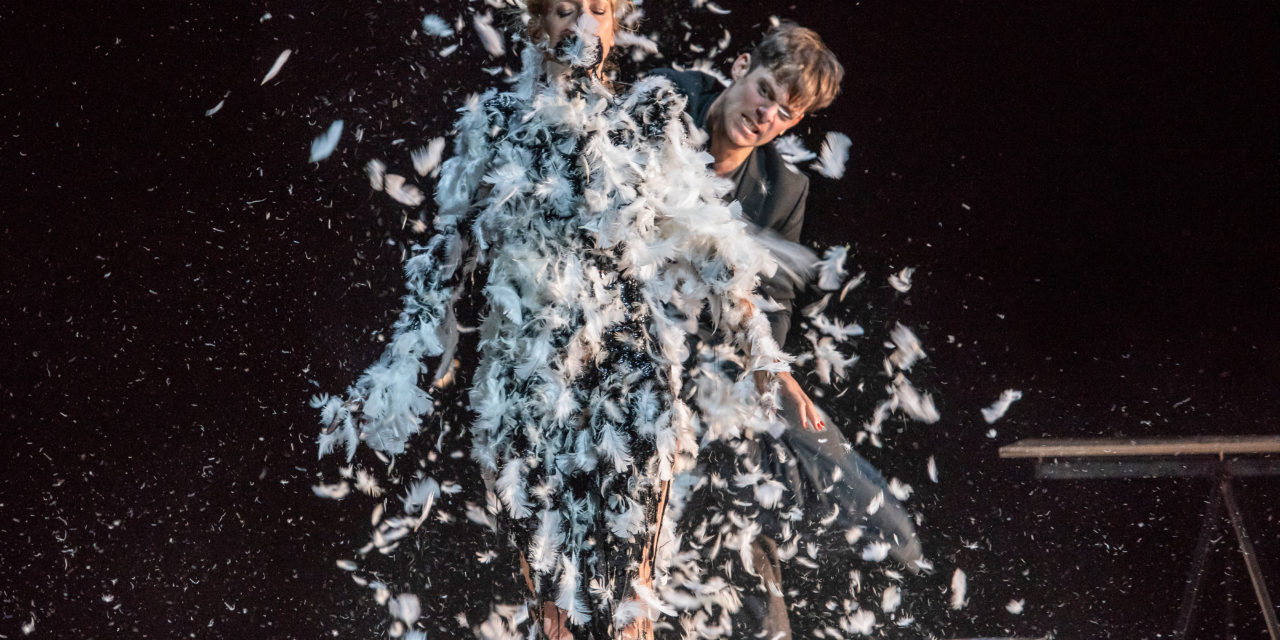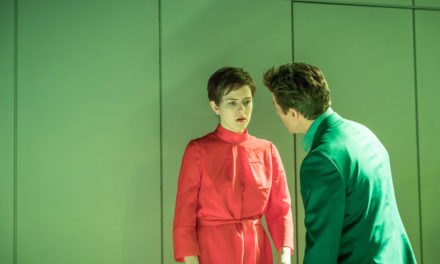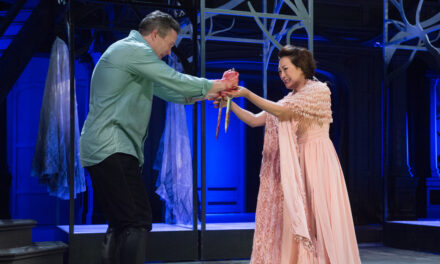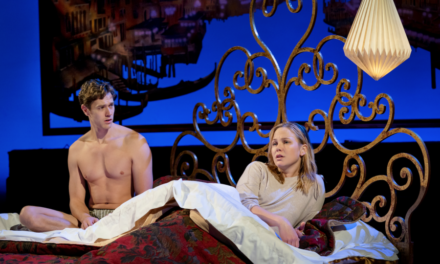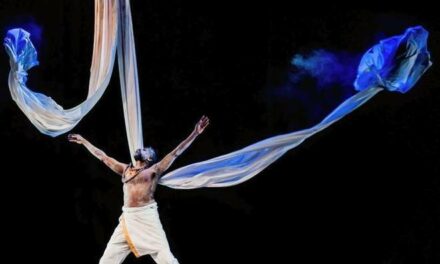Visionary director Ivo van Hove has descended on the evocatively retro Park Avenue Armory with the venerated Comédie-Française troupe in tow to present The Damned. The production is an adaptation of Lucino Visconti’s celebrated 1969 film about the von Essenbecks, an industrial family in 1930s Germany whose collusion with the Nazis facilitates operatic tragedy.
The armory is a block long edifice on the Upper East Side whose historic interiors are the perfect backdrop to the story of decay at the heart of van Hove’s sterling production, adapted from the film’s script. The choice of locale, with its echoes of affluence of decades past wafting through the halls and galleries of the armory, is an optimal preface to the familial unraveling at the center of The Damned.
The production’s pan-European provenance is sprawling: a Belgian director adapting an Italian film script about a German family played by a cast of French actors, performed in New York. The current political conflict between the US and its erstwhile EU allies, not to mention the plot revolving around fascism’s odious seduction and destruction of a powerful family, render this production a uniquely topical theatrical experience.
The masterful Comédie marks The Damned as its first performance in New York in over 10 years. They are expertly squired through a panoply of emotions from lust to rage to despair and back again. The cast is augmented by several videographers who don black garb, unobtrusively roaming the breadth of the massive stage and adjacent dressing room, an exposed space that expands the playing area to rock concert dimensions.
The evening commences with the 30 strong ensemble taking their places on the orange-clad stage in militaristic formation, a recurring motif that is employed like chapter demarcations in a novel. Director van Hove similarly threads in his distinctive integration of live and prerecorded video footage that is projected onto the massive upstage center screen.
Van Hove’s gift for transcendent imagery is reminiscent of cultural expat Robert Wilson, whose genius is juxtaposing dramatic lighting against strategically positioned translucent scrims with actors moving in often glacial geometric formation. Van Hove’s visual palette includes the visceral deployment of liquids, including water, blood, and tar. One of the numerous unforgettable images is an outdoor bathing scene which melds footage of several nude male bathers circling two men, who appear both on the screen and onstage. The actors appear with metal buckets of water they gleefully splash onto the stage and proceed to writhe around in.
The production’s numerous merits include a mixtape score offering a striking range from German metal to neoclassical orchestration to reverb-rich sound sculptures. In addition to screen images and liquids, there are machine guns and coffins, the latter arranged stage left on an elevated platform, where the various, doomed characters march to their ceremonial demise. Once inside, they are filmed in their death throes, projected onto the upstage screen.
Among the uniformly protean cast are stern patriarch Didier Sandre, his simmering wife played by Elsa Lepoivre, and wildcard son and heir Christophe Montenez. Montenez bears a distinct resemblance to proto-punk rocker Iggy Pop in his mighty youth, with a similarly menacing blend of homoerotic rock star and masochistic brutalism. His role could have easily lapsed into narcissistic shtick yet von Hove clearly reined in his performance to evoke wanton volatility while avoiding scenery-stealing.
Von Hove alternately evokes the stern grandeur of modern German opera and the forbidding terror of contemporary European metal in a distinctive mashup wholly his own. His “Damned” is one which lingers in the imagination long after the cast assembles onstage for their final formation.
The creative team deserves much credit for their seamlessly integrated designs. Costume designer An D’Huys mixes opulent gowns in with a muted palette of dark suits and pale military garb. Jan Versweyveld is credited with scenography and lighting design, the latter used to evoke the various emotions and mis en scénes of the evening. Video designer Tal Yarden and original sound designer and sound conceptualist Eric Sleichim likewise make essential contributions to the performance.
The production wisely updates Visconti’s potent yet somewhat dated and overheated film for a contemporary audience. In particular, the sexually fluid Martin von Essenbeck, played by Montenez, is no fey martyr but instead a powerful figure whose sexuality is presented matter-of-factually, neither novelty nor affliction.
Here’s hoping the Comédie returns to New York before another decade elapses. As for van Hove, he is slated to present a reimagining of West Side Story on Broadway, where he recently enjoyed success helming another American stage classic, The Crucible.
The Damned was performed at the Park Avenue Armory at 643 Park Avenue in New York City.
This post was written by the author in their personal capacity.The opinions expressed in this article are the author’s own and do not reflect the view of The Theatre Times, their staff or collaborators.
This post was written by Jack Wernick.
The views expressed here belong to the author and do not necessarily reflect our views and opinions.

